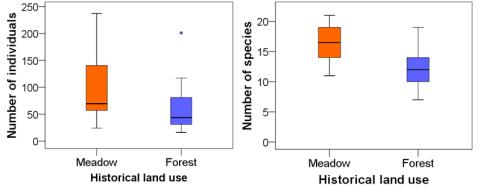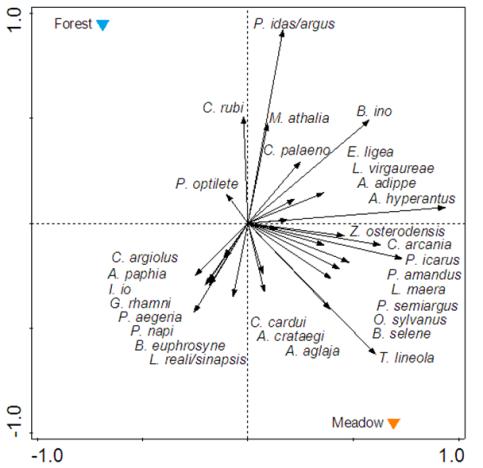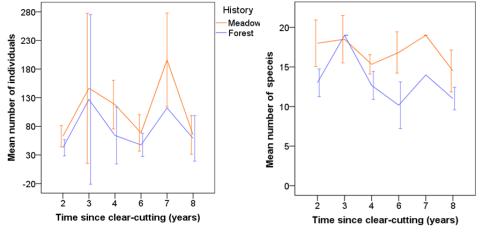Results
A total of 3751 individuals across 46 species were recorded, where 2315 individuals across 39 species were recorded at clear-cuts with a history of meadow, and 1436 individuals across 39 species were recorded at clear-cuts with a history of forest.
Clear-cuts with a history of meadow had a significantly higher number of individuals (p<0.01) and species (p<0.01) than clear-cuts with a history of forest (Figure 1). The single highest number of individuals and species were found at clear-cuts with a history of meadow, whereas the single lowest number of butterfly individuals and species were found at clear-cuts with a history of forest.

A majority of butterfly species preferred clear-cuts with a history of meadow over forest (Figure 2). Speceis such as C. rubi and P. idas/argus are woodland living species and therefore more associated with clear-cuts with a history of forest. On the other hand species such as Z. osterodensis and P. semiargus are more associated with clear-cuts with a history of meadow, amongst other species that prefer semi-natural grasslands.

Clear-cuts with a history of meadow had a higher number of butterfly individuals and species for all but one (TSC 3) of the six TSC-categories (Figure 3). Butterfly individuals and species did not differ in trends with time since clear-cutting between the different histories.

Responsible for this page:
Director of undergraduate studies Biology
Last updated:
05/28/14
